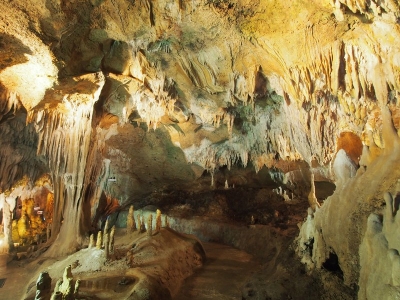WHAT CAUSES OCEAN CURRENTS?

Currents of water in the world’s oceans and seas are generated by wind and the movement of warm and cold water. Warm currents created by wind flow near the surface of the water and move away from the Equator. Cold water from the poles sinks below the warm water and moves into its place. Warm and cold currents often flow in the same area in different directions. The rotation of the Earth affects some currents by turning them into twisting movements called gyres.
Ocean currents are giant flowing streams of water that continually move through the ocean in a specific prevailing direction. Some currents flow at the ocean's surface (the upper 400 meters) , while some are found much deeper in the ocean. All ocean currents make a system that circulates around the global ocean. The volume of water transported by the global oceanic Conveyor Belt, (more about it later), is equivalent to the flow of about 100 Amazon Rivers or 16 times the flow of all the world’s rivers combined. This enormous potential of current energy could be utilized. Just think about clean, reliable, and inexhaustible "hydro" energy that is embedded in ocean currents!
Some currents carry warm water, typically from the equatorial parts of the ocean toward the poles, while others move cold water - usually from the polar areas toward the Equator.
It is difficult to map an ocean current, as the ocean water is clear and the reflection of light on the water surface does not depend on the velocity or temperature of the floating water. One way to map the ocean currents is by using sea surface temperatures derived from satellite imagery, as on these illustrations. Some surface currents carry water with temperature that may significantly vary from nearby water.
The rotation of the globe and the force of prevailing winds blowing over the ocean result in the flow of the ocean currents. More specifically, the ocean currents are controlled by three major factors: global winds, the Coriolis force, and the shape of the continents and locations of the major islands. The strongest currents are additionally "powered" by the differences in water temperature and salinity, which both result in the differences of water density, and consequently its weight.
The energy that the Earth absorbs from the Sun's radiation is not evenly distributed over the planet's surface, which causes convection, which in turn creates the prevailing winds, and finally, the ocean currents. Atmospheric circulation and ocean currents are the means to transfer heat from the warmest equatorial areas toward the Polar Regions. Clearly, ocean currents move significantly slower than winds, but they hold (first absorb, then release) more heat than the winds that push masses.
It is estimated that 20% of the spatial redistribution of heat on Earth is the effect of flowing ocean currents. Winds account for the remaining 80%.
Picture Credit : Google













